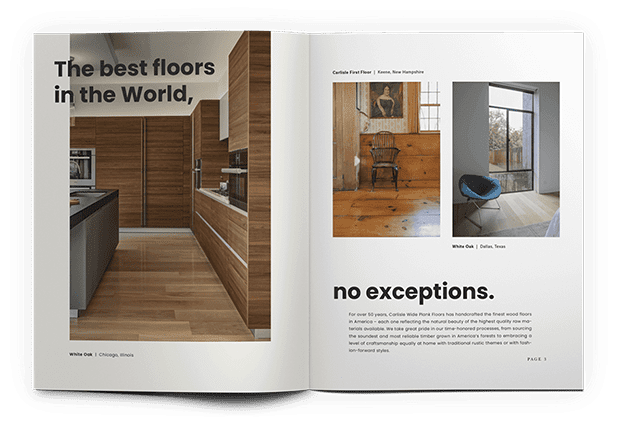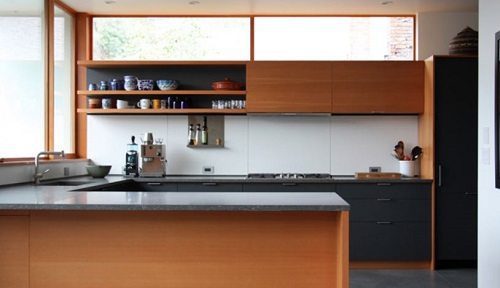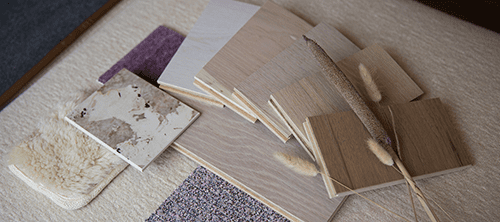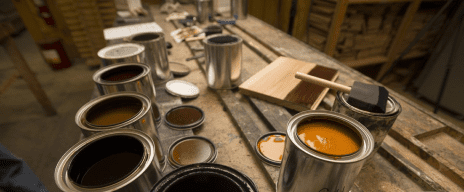4 Healthy Home Design Planning Tips for Asthma and Allergy Sufferers

May is National Asthma month. It’s no wonder with all the fresh air, it compels us to get outdoors, be active and explore all that nature has to provide.
 Both indoor and outdoor air can impact your quality of life if you are an allergy or asthma sufferer. While you can’t do anything about outside, you can take steps to minimize these discomforts inside the home, with careful home planning and product selection.
Both indoor and outdoor air can impact your quality of life if you are an allergy or asthma sufferer. While you can’t do anything about outside, you can take steps to minimize these discomforts inside the home, with careful home planning and product selection.
If you are planning a remodel, update, or a new home, follow these healthy home design planning tips to minimize the exposure to irritants and improve the quality of life in your home, by selecting the proper construction, coating, and interior decor products.
1. VOC’s
If you are doing your homework on indoor air quality, you have probably heard the term VOC or volatile organic compounds.
You’ll find VOC’s in everything from paints, to plywood, cleaning agents and floor finishes in the home. In fact, VOC levels can be up to 10 times higher in the home, than outside, according to the EPA. They remain one of the main causes of asthma in children, according to Green Parent list. Luckily, many more companies today are taking steps to minimize VOC’s in their products.
Because of this, we will focus on products that have zero or no measurable VOC’s for your building and design needs.

Endless Inspiration for the Floor of Your Dreams
GET DESIGN BOOK2. Heating, Cooling & Central Air
If you or a family member suffer from asthma or allergies there are steps you can take in the design of your heating, cooling and central air system to minimize allergens in the home.
Heat
In-floor, radiant heat, like systems provided by Warmboard, Climatec, and the like, provide benefits to allergy sufferers. According to Warmboard, radiant heat “can drastically reduce the spread of common allergens in the home because, unlike forced hot air systems, it does not push the fine particulate matter around the house.“
Cooling
Installing cooling systems, central air conditioning systems, along with the proper filters like a HEPA electronic air filter, is a great way to reduce allergens in the home by removing them completely from the environment. This minimizes pollens, molds, and reduces allergy, asthma and other respiratory problems, according to Utah based West Brothers Inc.
Some heating and cooling specialists, like Joseph A. Diepietro of NH-based Diepietro Home Heating, suggests that whole house cooling systems, not just room by room cooling systems will help improve indoor air quality significantly. It is important to evaluate both methods and determine which one is right for you.
Central Air
Proper ventilation and air flow management inside the home is important to reducing allergens.
This can be done with a ventilation system, ceiling fans, window and door placement (although this may bring in irritants from outside the home). Most central air systems will bring in fresh air from while also capturing indoor pollutants and moving them outside the home. As a homeowner, it’s important to change filters on a regular basis to keep your system working right, and maintain healthy indoor air quality.
3. Construction Materials

When it comes to construction materials, like plywood, look for those that are VOC and formaldehyde free.
One product, PureBond plywood, which got a nod from the organization, the Green Parents List Healthy Home, has no measurable VOC’s and can be sourced at common building suppliers like Home Depot, for easy access. It can be used for wall, flooring and ceiling panels.
Other products, like adhesives, will be used during the construction of your home, and you can also find zero or low VOC products for that application as well.
You may also be considering plaster, sheetrock or drywall for your interior walls. American Clay provides natural earth-based plaster products for interior applications. Not only are the products zero-VOC they help control temperature, buffer moisture and humidity, and they are mold resistant — all components of a healthy allergen-free home.
Most drywall and sheetrock board is treated with chemicals and actually attracts mold. But one great choice from the Green Home Guide is DragonBoard. This is fire, water, mold and fungus resistant, with no organic solvents, oils, toxic ingredients and other harmful contaminants.
4. Interior Décor
Reaching the point in your construction project where it is time to select colors, wood flooring, furniture, and fabric is exciting!
After staring at plywood and nails for months on end, this is where your home really comes to life. This is a fun process and one where you can maintain your commitment to selecting products that are environmentally friendly, low or zero VOC and maintain a healthy indoor environment for allergy and asthma sufferers.
Flooring Selection
The flooring you choose for your home will set the backdrop for the interior décor of your entire home. And unlike a curtain or a couch, it is the most difficult to replace, so you want to get it right the first. There is an overwhelming amount of research that supports the use of hard surface flooring, like hardwood flooring, in homes where allergy or asthma sufferers are present.
Not only is this type of flooring attractive, it doesn’t capture mold, dust mites and other allergens, like carpets or rugs. The National Wood Flooring Association states that “wood floors have the added benefit of not harboring allergens, microorganisms or harmful pesticides that can be tracked in from outdoors. In addition, dust, mold and animal dander contamination is minimal in homes with wood floors, which can significantly improve indoor air quality.” Other hard surface flooring options include slate, stone, or tile. These are more ideal for heavy traffic areas like a mudroom, whereas hardwood floors may be more appealing to the common areas of the home, like the kitchen or family room where comfort is most important.
You want to avoid laminate, bamboo and other mass produced floors will contain much higher levels of VOC, as well as formaldehyde, a well-known skin, and allergy irritant.
Kitchen & Bath Design

Just when you thought you might be designing a room where you didn’t have to worry about allergens, think again. There are small steps you can take to improve indoor air quality within these rooms.
You also want to think about ventilation within these rooms and install vents above the stove and in the ceilings. This ensures air will flow to the outside of the home. This requires working with your architect on the overall home design and layout, and with the central air designer to situate ductwork accordingly.
Paint and Finish Coatings
During the completion of your home, there will many types of varnish, stain and finish applied to the interior and exterior of your home. This includes wall paint, stain and finishes for your trim and stairs.
These products can contain VOC’s, which impact your indoor air quality. Luckily, many finish companies are aware of the growing concern around VOC’s level and have taken steps to provide solutions. Ecos Paints is one company that has developed zero-VOC coatings for most interior and exterior surface applications. They also offer odor and VOC absorbing paints that improve indoor air quality.
You can also take steps to avoid having to apply finish products in the home by using a prefinished hardwood floor like those finished with Carlisle Custom Coat. This finish contains no measurable VOC’s making it an ideal choice for allergy or asthma sufferers.
Odds & Ends
There are countless other products that we could include to help reduce allergens and irritants in your home.
This includes lighting, furniture, utensils, cookware, but we know we’ve given you enough information. Take what you’ve learned here and apply that to the rest of your interior decor research and selections and you’ll be on your way to designing a home that is beautiful and comfortable for every member of the family.
In Closing
Low or zero VOC building products, paints, and interior decor elements are not “standard” nor mainstream.
It is important to understand this because when it comes time to design your home and get estimates from builders, they may be quoting you for products and processes that are mainstream. It is important to talk to your potential builder and architect, if you are working with one, to explain your intentions to use low VOC products, and help them understand why it is important to you.
Without proper communication, you could end up with building materials and air systems that may introduce more irritants into your home, rather than reduce them. You may also end up with a much bigger bill if you request these health-conscious products after the contract has been signed, and standard construction materials have already been budgeted. So do your family and your wallet a favor and plan carefully early on, state your intentions and ensure your request for healthy home products and processes are being incorporated into the design and construction plans and documents.
– – – – – –




